Do you have a question about the Subaru 2015 Subaru Forester and is the answer not in the manual?
Details warranty information for vehicles sold in the United States, including limited and emission control system warranties.
Details warranty information for vehicles sold in Canada, including limited, anti-corrosion, and emission control warranties.
Guide on how to read and understand the manual for safe vehicle operation and extended service life.
How to use seats, seatbelts, and SRS airbags, with safety precautions.
Information on starting and operating the Subaru vehicle safely, covering engine start and stop procedures.
Guidance on when to take the Subaru for scheduled maintenance and how to keep it running properly.
Identifies and illustrates key exterior components and their locations on the vehicle.
Identifies and illustrates key interior components and their locations within the passenger compartment.
Identifies and illustrates components and controls located on the instrument panel.
Identifies and illustrates controls and features located on the steering wheel.
Details manual and power seat adjustments, head restraints, and seat heaters for optimal comfort and safety.
Covers seatbelt safety tips, types of retractors, and fastening procedures for maximum restraint.
Information on choosing and installing child restraint systems, including safety standards and compatibility.
Explains SRS airbag system components, precautions, and how they supplement seatbelts for protection.
Explains the seatbelt warning system, its illumination, and chime alerts for unfastened seatbelts.
Information on the SRS airbag system warning light and what conditions indicate a malfunction.
Explains the indicators for the front passenger's frontal airbag status (ON/OFF).
Details the CHECK ENGINE warning light, its meaning, and what to do if it illuminates or blinks.
Information on vehicle keys, including master, submaster, valet keys, and key number plate.
Procedures for locking and unlocking doors from the outside and inside, including remote operations.
Overview of the keyless access and push-button start system's functions, operation, and safety precautions.
Explains the functions and operation of the remote keyless entry system, including locking, unlocking, and panic alarm.
Details what happens when the alarm is triggered, including horn, lights, and indicator activation.
Procedures for arming the alarm system using the access key, remote transmitter, or power door locking switches.
Procedures for disarming the alarm system using the access key or remote transmitter.
Information on passive arming mode, which arms automatically without the transmitter.
Safety precautions for operating power windows, especially with children in the vehicle.
Information on vehicle keys, including master, submaster, valet keys, and key number plate.
Procedures for locking and unlocking doors from the outside and inside, including remote operations.
Overview of the keyless access and push-button start system's functions, operation, and safety precautions.
Explains the functions and operation of the remote keyless entry system, including locking, unlocking, and panic alarm.
Explains the ignition switch positions and safety precautions for models without push-button start.
Operation and safety precautions for the push-button ignition switch.
How to operate the hazard warning flasher for emergency signaling.
Explains the various meters and gauges on the combination meter, including speedometer and tachometer.
Explains the seatbelt warning system, its illumination, and chime alerts for unfastened seatbelts.
Information on the SRS airbag system warning light and what conditions indicate a malfunction.
Explains the indicators for the front passenger's frontal airbag status (ON/OFF).
Details the CHECK ENGINE warning light, its meaning, and what to do if it illuminates or blinks.
How to navigate and operate the multi-function display using the control switches.
The vehicle performs a self-check when the ignition is turned on, displaying checks for various fluid levels and maintenance items.
How warning messages can interrupt the current screen display with a beep.
Details the fuel consumption screen, including driving range and average consumption.
Overview of available audio sets and their operating details.
Operation of power switches, volume control, and sound settings.
How to operate the FM/AM radio, including band selection and tuning.
Instructions for inserting, playing, and managing tracks on a CD.
How to adjust center and side ventilators for airflow direction, opening, and closing.
Identification and function of controls on the climate control panel for various types (A, B, C, D).
How to activate and operate the automatic climate control system for optimal comfort.
How to manually control airflow modes, temperature, fan speed, and air inlet.
Overview of scheduled maintenance items and where to find detailed information.
General recommendations and warnings regarding vehicle maintenance and service, emphasizing dealer use.
Instructions for opening and closing the engine hood, with essential safety warnings.
Information on engine oil, including consumption, checking levels, and recommended types.
Information on all-season, summer, and winter tires and their suitability for different driving conditions.
Explains the TPMS function, warning lights, and procedures for checking and adjusting tire pressures.
Daily checks for tire condition, damage, and wear, with recommendations for contacting a dealer.
How to maintain correct tire pressure for optimal performance, tire life, and safety.
Instructions for handling and caring for a new vehicle during the initial 1,000 miles for optimal performance.
Safety warnings regarding engine exhaust gas and carbon monoxide exposure.
Specific driving tips for All-Wheel Drive models, emphasizing safe handling and maintenance.
Guidelines for driving safely in various conditions, including slippery roads and off-road situations.
Details fuel requirements, octane ratings, and fuel tank capacity for non-turbo and turbo models.
How to start and stop the engine using the ignition switch, including safety precautions.
How to start and stop the engine using the push-button ignition switch, including safety precautions.
Information on the remote engine start system, its operation, safety features, and transmitter programming.
Guidance on parking the vehicle safely in emergency situations, including hazard warning flasher usage.
Information on the temporary spare tire, its usage, warnings, and maintenance.
Lists the maintenance tools provided with the vehicle and their locations.
What to do if you get a flat tire while driving and step-by-step instructions for changing it.
Vehicle dimensions including overall length, width, height, wheelbase, and tread.
Engine specifications, including model, type, displacement, bore, compression ratio, and firing order.
Fuel requirements, octane ratings, and fuel tank capacity for non-turbo and turbo models.
Information on engine oil, including consumption, checking levels, and recommended types.
Details warranty information for vehicles sold in the United States, including limited and emission control system warranties.
Details warranty information for vehicles sold in Canada, including limited, anti-corrosion, and emission control warranties.
Guide on how to read and understand the manual for safe vehicle operation and extended service life.
How to use seats, seatbelts, and SRS airbags, with safety precautions.
Information on starting and operating the Subaru vehicle safely, covering engine start and stop procedures.
Guidance on when to take the Subaru for scheduled maintenance and how to keep it running properly.
Identifies and illustrates key exterior components and their locations on the vehicle.
Identifies and illustrates key interior components and their locations within the passenger compartment.
Identifies and illustrates components and controls located on the instrument panel.
Identifies and illustrates controls and features located on the steering wheel.
Details manual and power seat adjustments, head restraints, and seat heaters for optimal comfort and safety.
Covers seatbelt safety tips, types of retractors, and fastening procedures for maximum restraint.
Information on choosing and installing child restraint systems, including safety standards and compatibility.
Explains SRS airbag system components, precautions, and how they supplement seatbelts for protection.
Explains the seatbelt warning system, its illumination, and chime alerts for unfastened seatbelts.
Information on the SRS airbag system warning light and what conditions indicate a malfunction.
Explains the indicators for the front passenger's frontal airbag status (ON/OFF).
Details the CHECK ENGINE warning light, its meaning, and what to do if it illuminates or blinks.
Information on vehicle keys, including master, submaster, valet keys, and key number plate.
Procedures for locking and unlocking doors from the outside and inside, including remote operations.
Overview of the keyless access and push-button start system's functions, operation, and safety precautions.
Explains the functions and operation of the remote keyless entry system, including locking, unlocking, and panic alarm.
Details what happens when the alarm is triggered, including horn, lights, and indicator activation.
Procedures for arming the alarm system using the access key, remote transmitter, or power door locking switches.
Procedures for disarming the alarm system using the access key or remote transmitter.
Information on passive arming mode, which arms automatically without the transmitter.
Safety precautions for operating power windows, especially with children in the vehicle.
Information on vehicle keys, including master, submaster, valet keys, and key number plate.
Procedures for locking and unlocking doors from the outside and inside, including remote operations.
Overview of the keyless access and push-button start system's functions, operation, and safety precautions.
Explains the functions and operation of the remote keyless entry system, including locking, unlocking, and panic alarm.
Explains the ignition switch positions and safety precautions for models without push-button start.
Operation and safety precautions for the push-button ignition switch.
How to operate the hazard warning flasher for emergency signaling.
Explains the various meters and gauges on the combination meter, including speedometer and tachometer.
Explains the seatbelt warning system, its illumination, and chime alerts for unfastened seatbelts.
Information on the SRS airbag system warning light and what conditions indicate a malfunction.
Explains the indicators for the front passenger's frontal airbag status (ON/OFF).
Details the CHECK ENGINE warning light, its meaning, and what to do if it illuminates or blinks.
How to navigate and operate the multi-function display using the control switches.
The vehicle performs a self-check when the ignition is turned on, displaying checks for various fluid levels and maintenance items.
How warning messages can interrupt the current screen display with a beep.
Details the fuel consumption screen, including driving range and average consumption.
Overview of available audio sets and their operating details.
Operation of power switches, volume control, and sound settings.
How to operate the FM/AM radio, including band selection and tuning.
Instructions for inserting, playing, and managing tracks on a CD.
How to adjust center and side ventilators for airflow direction, opening, and closing.
Identification and function of controls on the climate control panel for various types (A, B, C, D).
How to activate and operate the automatic climate control system for optimal comfort.
How to manually control airflow modes, temperature, fan speed, and air inlet.
Overview of scheduled maintenance items and where to find detailed information.
General recommendations and warnings regarding vehicle maintenance and service, emphasizing dealer use.
Instructions for opening and closing the engine hood, with essential safety warnings.
Information on engine oil, including consumption, checking levels, and recommended types.
Information on all-season, summer, and winter tires and their suitability for different driving conditions.
Explains the TPMS function, warning lights, and procedures for checking and adjusting tire pressures.
Daily checks for tire condition, damage, and wear, with recommendations for contacting a dealer.
How to maintain correct tire pressure for optimal performance, tire life, and safety.
Instructions for handling and caring for a new vehicle during the initial 1,000 miles for optimal performance.
Safety warnings regarding engine exhaust gas and carbon monoxide exposure.
Specific driving tips for All-Wheel Drive models, emphasizing safe handling and maintenance.
Guidelines for driving safely in various conditions, including slippery roads and off-road situations.
Details fuel requirements, octane ratings, and fuel tank capacity for non-turbo and turbo models.
How to start and stop the engine using the ignition switch, including safety precautions.
How to start and stop the engine using the push-button ignition switch, including safety precautions.
Information on the remote engine start system, its operation, safety features, and transmitter programming.
Guidance on parking the vehicle safely in emergency situations, including hazard warning flasher usage.
Information on the temporary spare tire, its usage, warnings, and maintenance.
Lists the maintenance tools provided with the vehicle and their locations.
What to do if you get a flat tire while driving and step-by-step instructions for changing it.
Vehicle dimensions including overall length, width, height, wheelbase, and tread.
Engine specifications, including model, type, displacement, bore, compression ratio, and firing order.
Fuel requirements, octane ratings, and fuel tank capacity for non-turbo and turbo models.
Information on engine oil, including consumption, checking levels, and recommended types.
| Brand | Subaru |
|---|---|
| Model | 2015 Subaru Forester |
| Category | Automobile |
| Language | English |

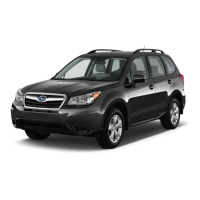

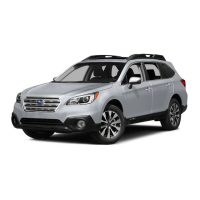
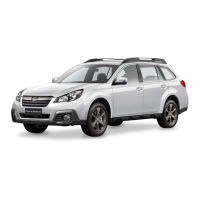
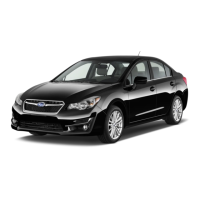
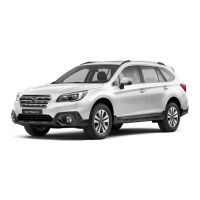
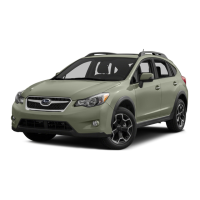



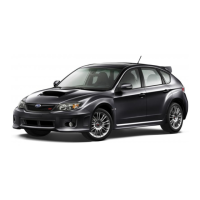
